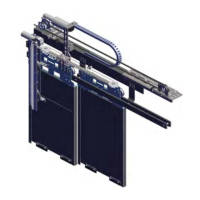What to do if my Langer & Laumann TSG V4 travel path is locked?
- KKimberly ThompsonAug 21, 2025
If the door travel path is locked, consider the following possibilities: * The door lock may not be unlocked: Check the door mechanics. * There may be an obstruction in the door's path: Inspect the travel path and remove any obstructions. * The initial measurement movement of the door might be incorrect or not performed: Initiate the self-learn procedure. * The buffer-type stops for the 'Closed position' or 'Opened position' could be missing or incorrectly adjusted: Start the self-learn procedure.


